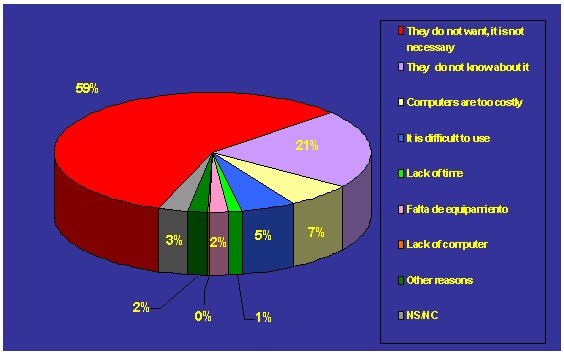|
|
 |





BACKGROUND INFORMATION ABOUT INTERNET USE IN SPAIN (NATIONAL SURVEYS)
One out of every four Spaniards surf the Internet, according to a general study on means of communication.
The reactivation of the Internet is an accomplished fact, according to the data obtained from the second survey done by the General Study on Means of Communication (EGM) 2003: a 2.9 percent growth in 2003 verifies that there is a new impulse to use the Internet in Spain.
On average 27.4% of the population connects to the Internet regularly, which represents a total of 9,716,006 people. The percentage of those who connect from their homes is also growing and now stands at 62.4% of total surfers, a reduction being noted among those who connect from their workplaces (30,7%). Likewise, the number of surfers who connect from educational centres has also increased slightly, now standing at 16.2%.
The study also shows that there is a change in the proportion of sexes among the net-surfers, moving from a previous male-female proportion of 7 to 3, and arriving at the current 6 to 4.
- When considered by autonomous communities, great changes have also been noticed. Catalunya, which traditionally had the highest percentage of Internet surfers, has now lost to Madrid, which has moved from 27% to 32.6%. Likewise, Aragon and Extremadura also stand out in percentage growth in their surfing populations.
Reasons for not using the Internet

Source: Instituto Nacional de Estadística
Copyright INE 2003
Access to the Internet from private homes by autonomous communities and the greatest numbers (in thousands)

Source: Instituto Nacional de Estadística
Copyright INE 2003

|




